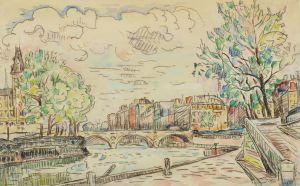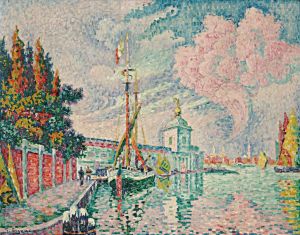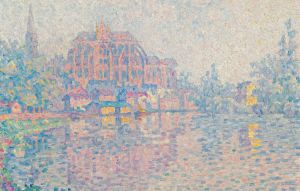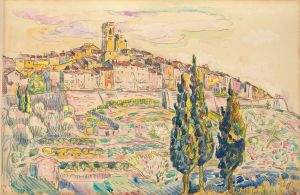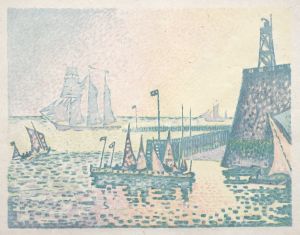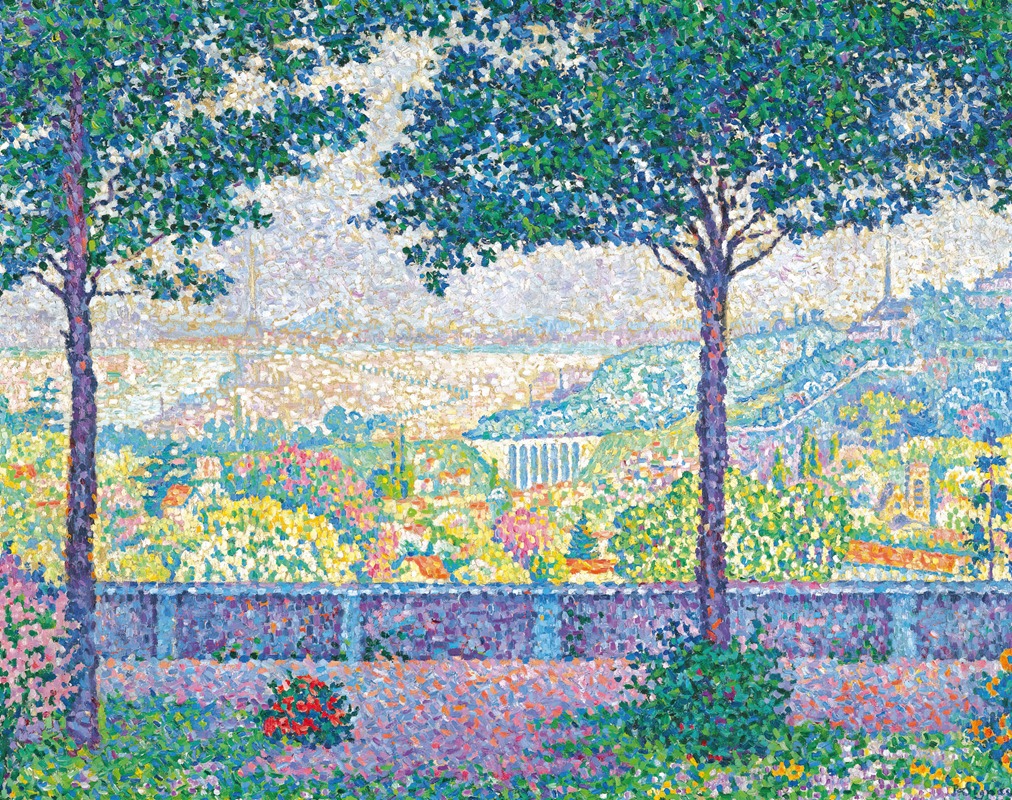
Terrasse De Meudon
A hand-painted replica of Paul Signac’s masterpiece Terrasse De Meudon, meticulously crafted by professional artists to capture the true essence of the original. Each piece is created with museum-quality canvas and rare mineral pigments, carefully painted by experienced artists with delicate brushstrokes and rich, layered colors to perfectly recreate the texture of the original artwork. Unlike machine-printed reproductions, this hand-painted version brings the painting to life, infused with the artist’s emotions and skill in every stroke. Whether for personal collection or home decoration, it instantly elevates the artistic atmosphere of any space.
"Terrasse de Meudon" is a painting by the French artist Paul Signac, a prominent figure in the Neo-Impressionist movement. Signac, born in 1863, was a contemporary of Georges Seurat and played a significant role in developing the technique known as Pointillism, which involves applying small, distinct dots of color to form an image. This technique is a hallmark of Neo-Impressionism, which sought to bring a scientific approach to the use of color and light in painting.
The painting "Terrasse de Meudon" was created in 1899, during a period when Signac was deeply engaged in exploring the effects of light and color through Pointillism. Meudon is a suburb of Paris, known for its picturesque landscapes and views of the city. The choice of this location reflects Signac's interest in capturing the serene and idyllic aspects of suburban life, a theme that recurs in many of his works.
In "Terrasse de Meudon," Signac employs his characteristic technique to depict a tranquil scene. The painting features a terrace overlooking a lush landscape, with the city of Paris visible in the distance. The composition is carefully structured, with the terrace in the foreground leading the viewer's eye towards the expansive view beyond. Signac's use of color is particularly noteworthy; he applies a vibrant palette to convey the play of light across the scene, with each dot of color contributing to the overall harmony of the image.
Signac's approach to color was influenced by the scientific theories of the time, particularly those related to optical mixing. By placing dots of pure color side by side, he relied on the viewer's eye to blend them, creating a more luminous and dynamic effect than traditional mixing of pigments on a palette. This method allowed Signac to achieve a greater intensity and vibrancy in his work, which is evident in "Terrasse de Meudon."
The painting is also significant for its reflection of Signac's personal philosophy and artistic vision. He was an advocate for the idea that art should evoke a sense of joy and beauty, and his works often emphasize harmony and balance. "Terrasse de Meudon" exemplifies this belief, offering a peaceful and contemplative view that invites the viewer to appreciate the simple pleasures of nature and the interplay of light and color.
Throughout his career, Signac remained committed to the principles of Neo-Impressionism, and his work had a lasting impact on the development of modern art. He was not only a painter but also an influential writer and theorist, contributing to the spread of Neo-Impressionist ideas through his essays and lectures.
Today, "Terrasse de Meudon" is recognized as an important example of Signac's mature style and his mastery of the Pointillist technique. It continues to be celebrated for its innovative use of color and its ability to capture the essence of a moment in time with clarity and precision. The painting is part of the collection at the Musée d'Orsay in Paris, where it is appreciated by visitors from around the world for its artistic and historical significance.







